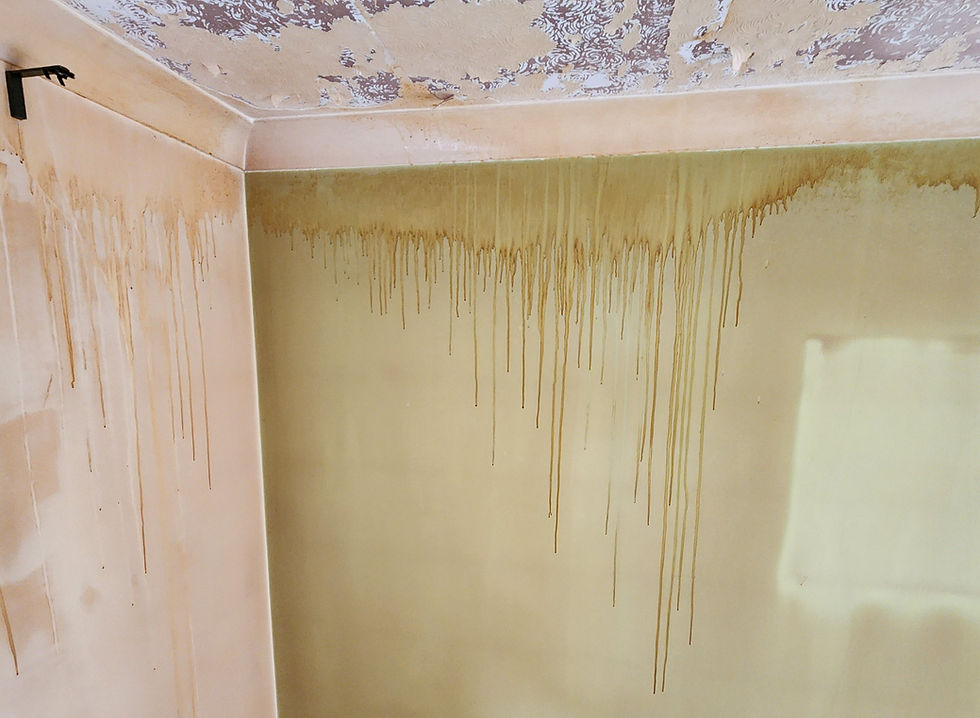How to paint a stained or varnished bannister: Step-by-Step Guide for a Professional Finish
- Kurt Hatwell
- Sep 28
- 2 min read
Dark stained or varnished bannisters were a big trend in the 1970s and 1980s. Today, many homeowners want a brighter, more modern look — but the thought of painting a wooden bannister can feel daunting.

The good news? With the right tools, preparation, and method, you can paint a stained or varnished bannister yourself and achieve a professional finish that lasts for years. This guide shows you exactly how to paint a wooden bannister from start to finish.
Tools You’ll Need to Paint a Bannister
Using the right tools will make painting a wooden bannister far easier and help you achieve a smooth, durable finish:
Two 1.5" Arroworthy brushes – ideal for detail work and cutting in
Two 4" medium-pile rollers – for the larger, flat areas
Paint kettle (hand-held) – to keep paint close and manageable
50mm masking tape – for clean edges and carpet protection
Sanding sponge – for lightly keying the surface before priming
Primer – Johnstone’s Trade Joncryl Primer or Zinsser BIN Aqua for stained or varnished wood
Topcoat paint – Johnstone’s Trade Aqua Guard Satin Finish for a hard-wearing finish
Step 1: Prepare Your Wooden Bannister
Good preparation is the secret to a chip-resistant, long-lasting finish. Here’s how to prepare a stained or varnished bannister for painting:
Lightly sand all surfaces Use a sanding sponge to gently scuff the bannister. You don’t need to sand back to bare wood — just scratch the surface enough for the primer to grip. Pay special attention to the handrail, which gets the most wear.
Clean thoroughly Wipe everything down with a damp cloth and vacuum up any sanding dust to avoid imperfections.
Mask surrounding areas Protect carpets and skirting boards by applying 50mm masking tape along the edges. Tuck the tape firmly into the carpet edge to prevent paint seepage.

Step 2: Prime the Bannister
Priming correctly is crucial when painting a wooden bannister, especially one that’s stained or varnished.
Apply three light coats of primer in total.
Use your brush to cut in around tight areas such as the tops and bottoms of spindles.
Use a roller for larger sections to achieve an even coat.
Work in small sections and check for drips before they dry.
Step 3: Sand Between Coats
After each coat dries, lightly sand any lumps, bumps, or paint build-up with your sanding sponge. Focus on corners and edges. Wipe off any dust before applying the next coat.

Step 4: Apply Your Topcoat
Once the priming is complete, apply two coats of your chosen topcoat paint (such as Johnstone’s Trade Aqua Guard Satin Finish). Use light, even coats to achieve a smooth, durable finish that will stand up to daily use.
How Long Does It Take to Paint a Wooden Bannister?
Painting a bannister is time-intensive but worth it. As a guide, painting from the bottom to the top of the stairs typically takes about two hours per coat. You’ll likely need five coats in total (three primer + two topcoat).

The Finished Result
Follow this process and you’ll transform your bannister into a fresh, modern feature without the cost of replacement. Knowing how to paint a stained or varnished bannister correctly will give you a durable, professional finish that stands the test of time.




Comments